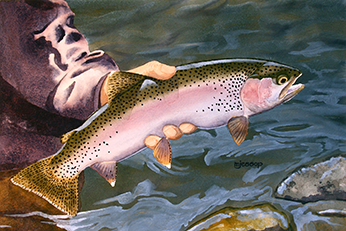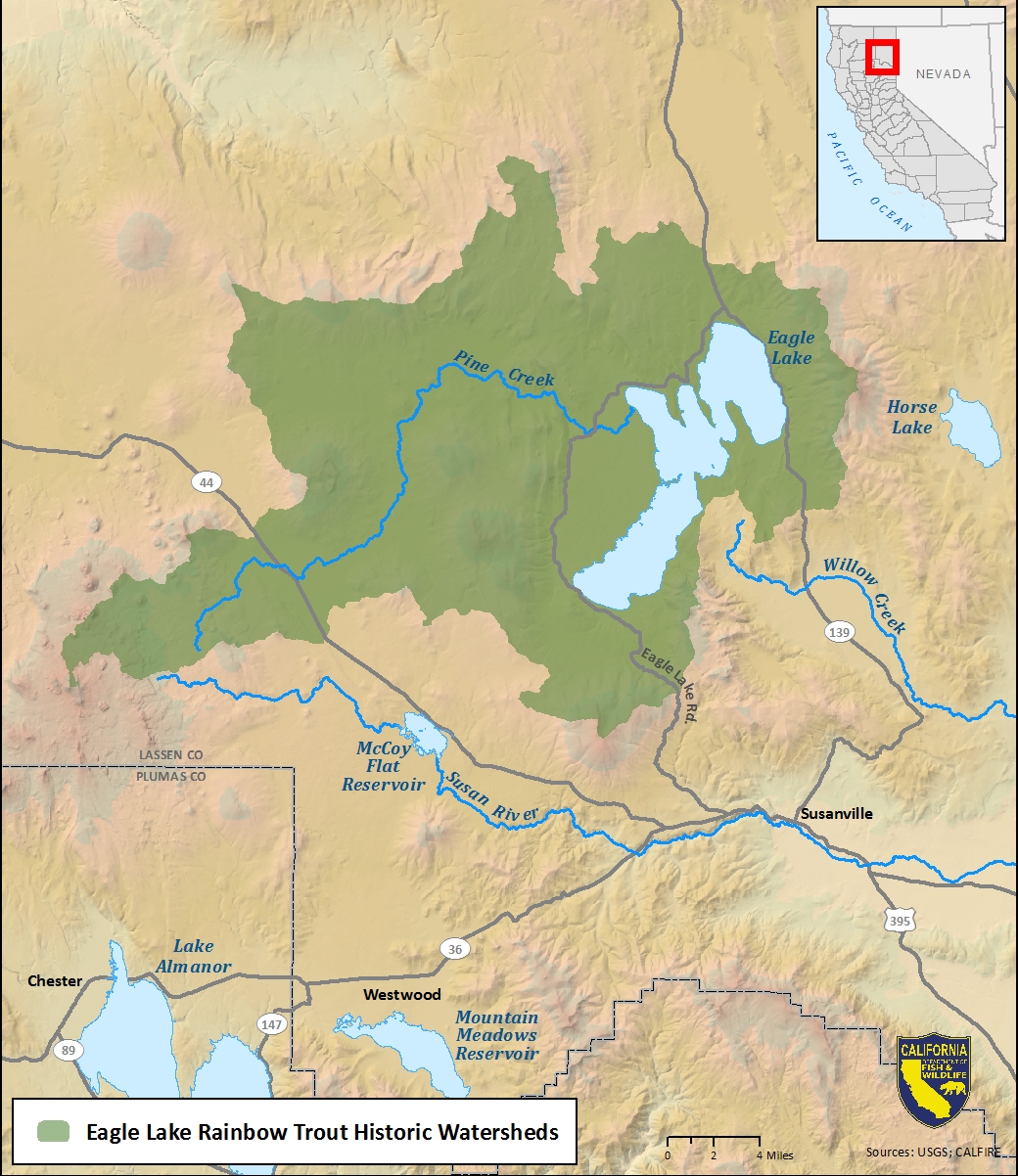Oncorhynchus mykiss aquilarum
Distribution and Habitat
 © Mark Jessop, all rights reserved
© Mark Jessop, all rights reserved
Eagle Lake rainbow trout are endemic to Eagle Lake and its main tributary, Pine Creek. It is one of California’s largest natural lakes and is fairly unique due to its high pH and alkalinity. Fish that live in highly alkaline waters require special adaptations. Many native trout in California have been impacted by the introduction of non-native fish. In the case of Eagle Lake, previous attempts to introduce numerous other sport fishes, including lake trout, rainbow trout, bluegill, largemouth bass, bullhead, and crappie failed because these fish lacked the adaptive responses that Eagle Lake rainbow trout have.
Threats
 Map of Eagle Lake rainbow trout historic watershed. (click/tap to enlarge)
Map of Eagle Lake rainbow trout historic watershed. (click/tap to enlarge)
Historically, the majority of spawning occurred in Pine Creek, a tributary on the western shore of the lake. Due to extremely low lake levels and accompanying population decline observed in the 1930s and 1940s, resource managers feared the species may go extinct. As a result, a weir was installed on Pine Creek in the late 1950s to capture Eagle Lake rainbow trout during their spawning migration. Eggs and milt are collected, fertilized, and transported to state fish hatcheries where they are reared for nearly a year and a half until they are large enough to be replanted into Eagle Lake or other waters across the state. This artificial rearing process and back-stocking into Eagle Lake allows for continued survival of this species until natural spawning in Pine Creek can be reestablished.
The need for a fish weir currently prevents natural reproduction at self-sustaining levels. Since Eagle Lake rainbow trout have undergone more than 60 years of artificial selection in a hatchery setting, this may have long-term negative effects on their genetic integrity.
Additionally, Pine Creek flows intermittently into Eagle Lake and is dominated by non-native brook trout that were introduced in the 1940s. A top restoration goal is to remove non-native brook trout and reestablish natural spawning of Eagle Lake rainbow trout in Pine Creek. To help with this, the fish weir was modified in 2012 to allow spawning Eagle Lake rainbow trout some access to Pine Creek.
Eagle Lake rainbow trout face other threats, including habitat degradation from logging, grazing, water diversions, railroads, and roads. Climate change and low lake levels are a growing concern that reduces available habitat, increases water temperature, and changes the water chemistry.
Conservation and Management
CDFW worked with numerous state, federal, and non-profit agencies to publish a conservation strategy for Eagle Lake rainbow trout. The primary focus is on restoration in the Pine Creek watershed to reestablish a wild, naturally-spawning population. Other ongoing actions include fencing off sections of the creek to exclude livestock, replacing impassible culverts, and removing structures that divert water from Pine Creek.
Species Status
Eagle Lake rainbow trout were proposed to be listed under the Federal Endangered Species Act but were determined to not merit listing. This was mainly due to the many conservation actions and protections afforded under a multi-agency conservation strategy. They are currently a State Species of Special Concern.